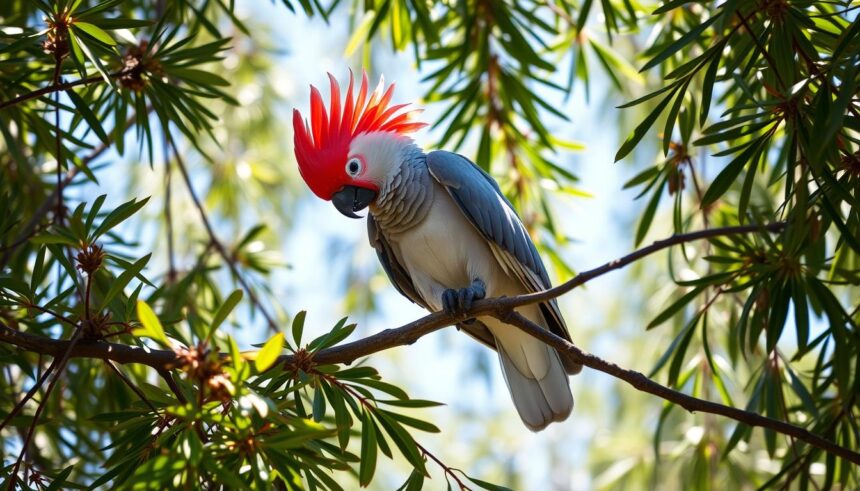Gang Gang Cockatoo
The gang gang cockatoo is a standout in Australia’s bird world. Known scientifically as Callocephalon fimbriatum, it’s a native gem loved by birdwatchers and nature fans. Its bright red head and crest make it a symbol of Australia’s rich wildlife.
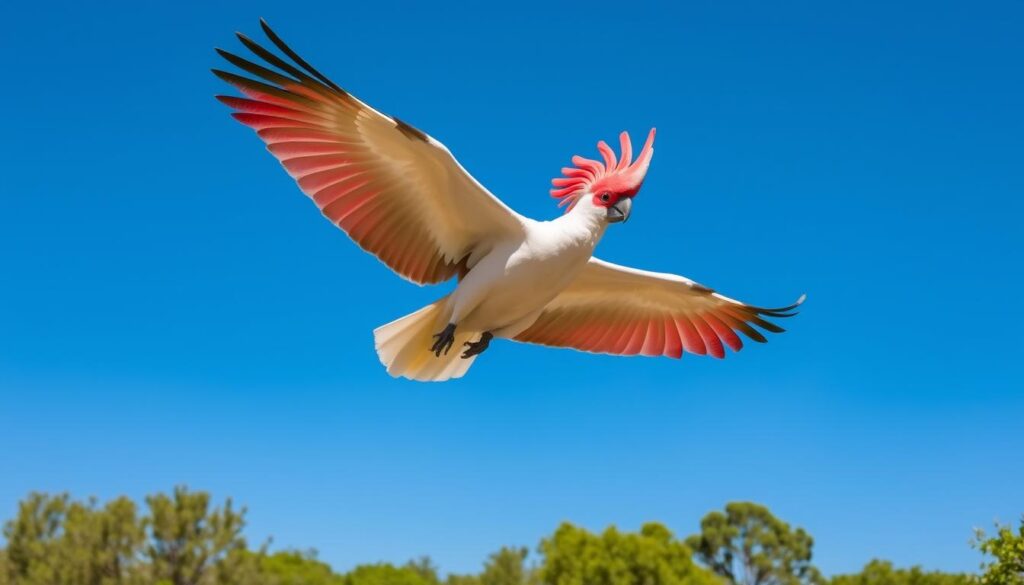
The gang gang cockatoo is a key part of Australia’s bird diversity. Its vibrant colors and interesting behaviors show the beauty of Australia’s natural world. It’s a favorite among bird lovers and conservationists globally.
Introducing the Gang Gang Cockatoo
The gang gang cockatoo, also known as the crested cockatoo or red-headed cockatoo, is a unique bird found in southeastern Australia. It has a distinctive crest and striking red head. This makes it a true icon of Australian wildlife.
Distinctive Appearance and Habitat
The gang gang cockatoo is easy to spot because of its gray feathers and the male’s red head. Its crest can be raised or lowered, showing different expressions. These birds are medium-sized, about 35-40 cm long, with a 60 cm wingspan.
They live in eucalyptus forests and woodlands in southeastern Australia. This includes the Great Dividing Range and coastal areas of New South Wales and Victoria. They like areas with mature trees and younger growth for nesting and foraging.
| Feature | Description |
|---|---|
| Plumage | Gray with a distinctive red head (male) |
| Size | 35-40 cm in length, 60 cm wingspan |
| Habitat | Eucalyptus forests and woodlands of southeastern Australia |
The gang gang cockatoo: A Species Overview
Despite its less impressive name, the gang gang cockatoo, Callocephalon fimbriatum, is a special bird from Australia. It is a brightly colored bird that is of medium size, and which has some very unique behaviors.
It is a specification of the family Cacatuidae. This family has many cockatoo species from Australia and surrounding regions. Australia’s only member of the gang gang cockatoo is in the genus Callocephalon.
- The gang gang cockatoo has grey feathers plumage, with the male having red head and crest.
- These birds can live for about 50 years in captivity.
- They are gregarious animals and found mostly in groups of two or in pairs. They emit very many voices and perform unique activities.
Gang gang cockatoo has ecological significance because it is a native Australian parrot. As does everything that has the capability to actively help maintain the balance and variety of the ecosystem into which it fits.
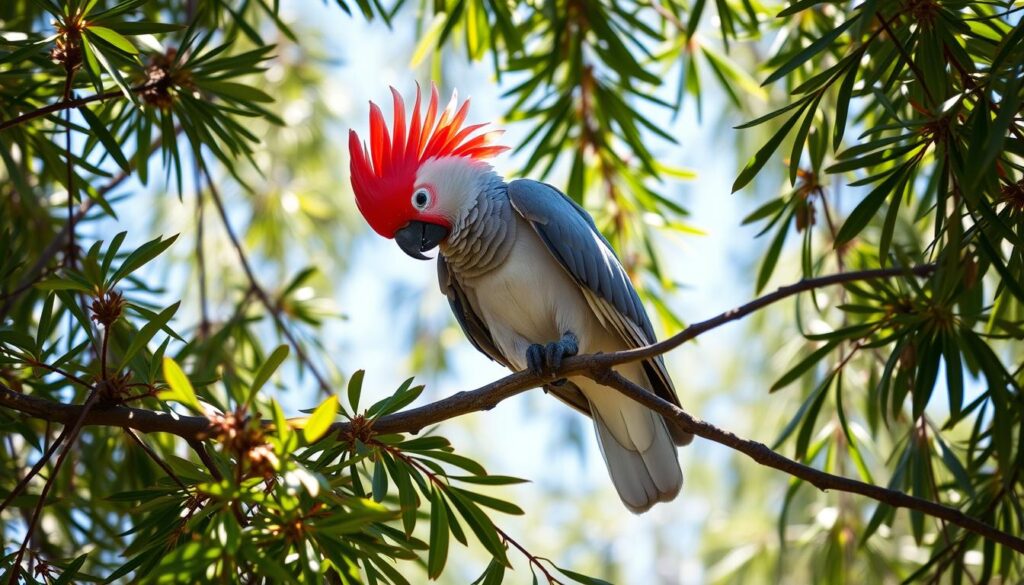
The Gang Gang Cockatoo's Natural Habitat
po recente, the gang gang cockatoo, an exotic parrot, is found in the forests and woodlands of southeastern Australia. It can be characterized by rather attractive appearance and its behavior is quite unordinary. This is why understanding its natural environment will play a huge factor in avian conservation.
Distribution and Habitat Preferences will remain the fourth chapter.
The Gang Gang Cockatoo mostly resides in the mountains of southern eastern Australia. Wollemi National Park in New South Wales, up to Yarra Ranges in Victoria, it is likely to be found. These birds prefer various sorts of forest and woodland, including dry and wet sclerophyll forests and sub alpine woodlands.
They have a liking to areas that have many huge trees for shelter and foraging. They prefer lands with alot of eucalyptus trees and other local species. These offer seeds fruits and insects for them to feed on.
- Dry sclerophyll forests
- Wet sclerophyll forests
- Sub-alpine woodlands
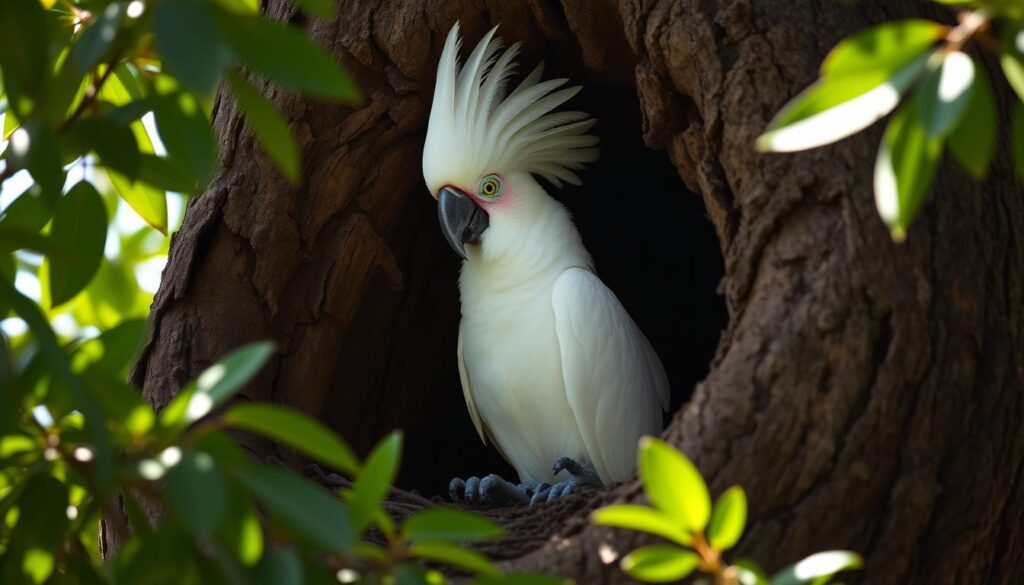
This bird needs its natural habitats to be protected to ensure that the gang gang cockatoo continued to thrive. Many of the special places are at risk due to issues of urban growth and changes of land. Therefore the need to endeavour to conserve and rehabilitate these forests and woodlands for the gang gang cockatoo.
Mating and Nesting Patterns
- Among these species, the gang gang cockatoo is the most interesting subject to discuss because of its unusual patterns of reproduction and nest building. These birds are highly wise and performs complex display to get the attention of the bird of their dreams. They choose their nest sites, they conserve avian resources all over their natural habitat in Australia.
- The breed for the gang gang cockatoo is usually during early spring season or at the period that is known as spring. It is complex in structure, birds are in pairs and the exhibits are used to make love. Male cockatoos use bowing as a sign of love and assertiveness of dominance among the birds they are with.
- After they have formed a pair, both chase each other towards the site they expect the other will accept. They often pick the niche of a eucalyptus tree or some other natural burrowage. During nest building it becomes apparent that this is a two bird affair with both the male and female contributing towards the building on a comfortable home for chicks in the near future.
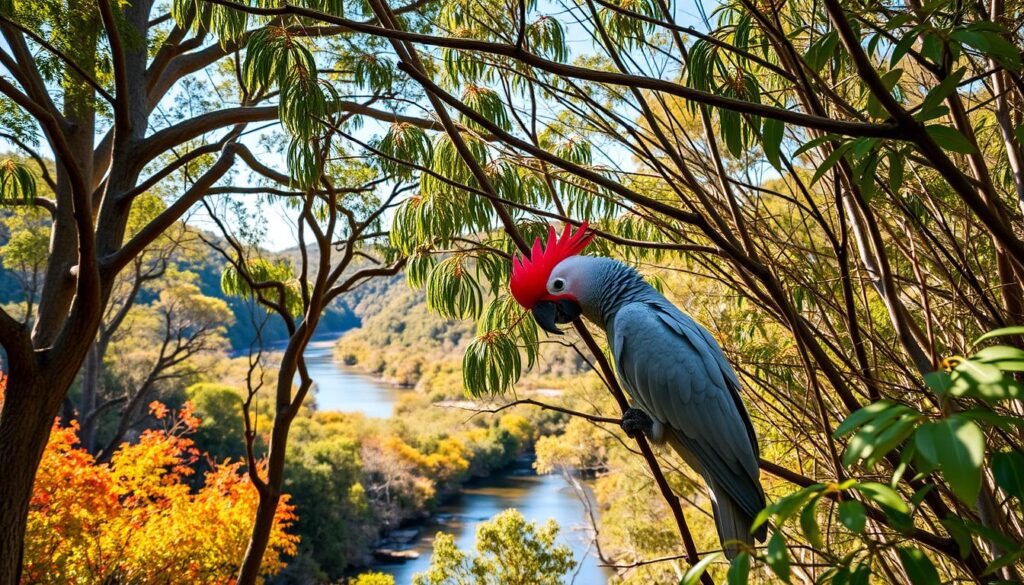
The female gang gang cockatoo typically lays 2-3 eggs, which she incubates for around 30 days. During this time, the male provides food and protection for the nesting female. Once the chicks hatch, both parents work tirelessly to feed and care for their young until they are ready to fledge and become independent.
The successful rearing of gang gang cockatoo chicks is essential for the long-term survival of this iconic Australian species. By understanding and preserving the unique breeding and nesting behaviors of these birds, avian conservation efforts can help ensure the continued presence of the gang gang cockatoo in its natural habitats for generations to come.
Dietary Habits and Foraging
The gang gang cockatoo is a unique bird from Australia. It has a varied diet and great foraging skills. These abilities help it survive in its natural habitats.
What Do Gang Gang Cockatoos Eat?
Gang gang cockatoos mainly eat plants. Their diet includes seeds, nuts, and fruits. They find these foods in the forests and woodlands they live in.
Seeds: They use their strong, curved beaks to open seed casings and get the kernels.
Nuts: They can also get nuts out of their shells, like Banksia and Casuarina nuts.
Fruits: They eat fruits like berries and other wild fruits they find.
To get what they need, gang gang cockatoos forage in groups. They use their senses and problem-solving to find food.
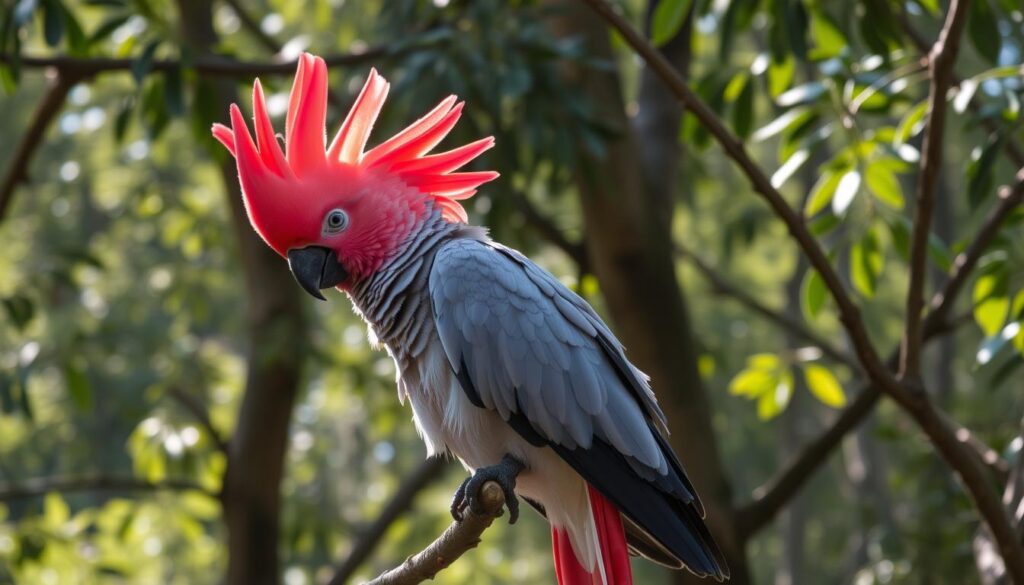
Conservation Status and Threats
The gang gang cockatoo is an endemic bird in southern eastern region of Australia. This bird is recognized as a vulnerable species according to the IUCN Red List of threatened species. This is why it is important that all stakeholders should take measures to protect this particular bird.
The primary limiting factors to the existence of the gang gang cockatoo include habitat destruction and global warming. Causes include urbanization, logging, and fires. These changes make it difficult for the birds to find areas in which they could lay their eggs and get food in equal measure. This also means that climate change has also resulted to drought and there are extreme weather conditions which will be even harder for these birds.
- However, to solve these problems avian conservation societies and governments around the world have responded. They are working on:
- Protections and conservation of the environment where the birds can build their nests, feed from.
- Observing the birds in order to find out more about their everyday requiremens and dangers.
- Making people aware on the necessity of preserving the gang gang cockatoo
That of making use of the local people to address the problems that the birds are Syrian%;”> Services to be provided There are the following services to be provided to the target group: That of making use of the local people to address the problems that the birds are Syrian
Preservation of the gang gang cockatoo is very important in to the natural environment. Thus, getting through to people that saving this bird means saving beauty of Australia for the future generations. That is the message that the importance of avian conservation can sustain the healthy ecosystem.
The Gang Gang Cockatoo as a Pet
The gang gang cockatoo is a unique bird species. But, it’s not always the best choice as an exotic pet bird. These birds have special needs that make them challenging to care for.
Temperament and Handling
Gang gang cockatoos are smart and curious. But, they can also be stubborn. They need owners who can give them lots of attention and time.
Housing and Enrichment
It’s important to provide a good home for a gang gang cockatoo. They need big spaces to climb, perch, and forage. Keeping them mentally stimulated is key to their happiness.
Dietary Considerations
The gang gang cockatoo’s diet is very important. They have specific eating needs. A balanced diet is crucial for their health and long life.
Legal and Ethical Implications
In many places, owning exotic pet birds like gang gang cockatoos is regulated. Owners must follow the law and act responsibly. This ensures the birds are treated ethically.
Deciding to have a gang gang cockatoo as a pet is big. It requires understanding their needs and your ability to provide a good home. Thinking carefully about this is important for both the bird and the owner.
Conclusion
We’ve explored the world of the gang gang cockatoo, a unique and vulnerable bird in Australia. This journey shows how important it is to protect this iconic bird.
The gang gang cockatoo stands out with its looks, special habitats, and behaviors. Learning about its struggles helps us see why we must keep working to save it. This includes fighting against habitat loss and invasive species.
It’s our duty to protect the gang gang cockatoo and other Australian parrots for the future. We can do this by working together, doing research, and getting people involved. This way, we can keep this amazing bird and its home safe.
FAQ
What does the term, gang gang cockatoo mean?
Gang gang cockatoo living in the southeast region of Australia is a remarkable flight. The Ibis has a crest and carries bright red plumage on the head of male Ibis.
Can the gang gang cockatoo be found?
These birds are found in the region of southeastern Australia. They reside in forest and woodland region of AUC, NSW, and VIC.
What is meritomorphic description of the gang gang cockatoo?
The gang gang cockatoo is a stealth bird of medium size with a rather splendid crest on its head. The mature male has a red head while the mature female has a gray head. Their feathers may be dark-gray or black and they have a special drawing on the wings and on the back.
To how many years do gang gang cockatoos life span?
These birds can live up to 50 years in the wild Males and females have reproductive maturity at the age of 2 and 3 respectively. Some may even live longer.
Where should gang gang cockatoos be placed and what do they feed on?
It primarily consume seeds, nuts, berries, and fruits.” These foods are located in their forest and woodland habitats.
What is the IUCN conservation status of the gang gang cockatoo?
It is important to note that the gang gang cockatoo is now classified as vulnerable. Hazards consist of habitat destruction, urbanisation, and climate change.
Are gang gang cockatoos mixable or can they be made to be pets?
People take them home for being pets, but it is not always a wise thing to do in most of the cases. They require some attention and there are legal and ethical concerns when it comes to birds of this type being caged.
Here are five interesting facts about gang gang cockatoos?
These birds make a familiar sound, which resembles the name of a two-stroke engine, “gung-gung.” They are arboreal and may swing upside down doing some critical functions when it comes to seed dispersal in their natural habitats, the forests.






